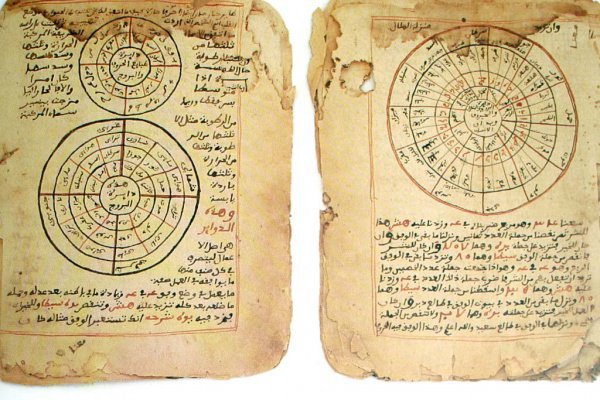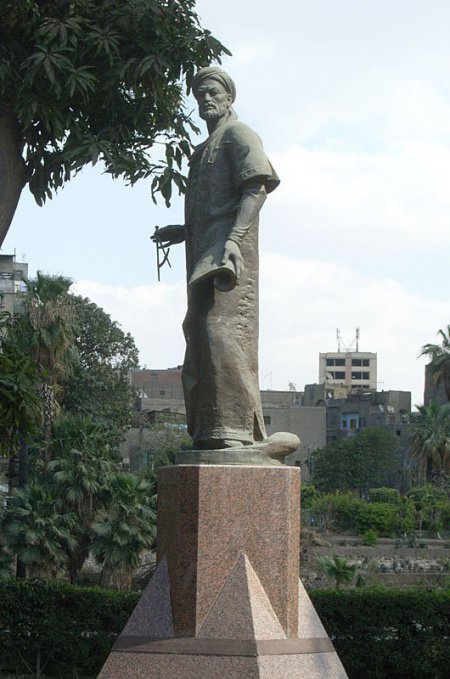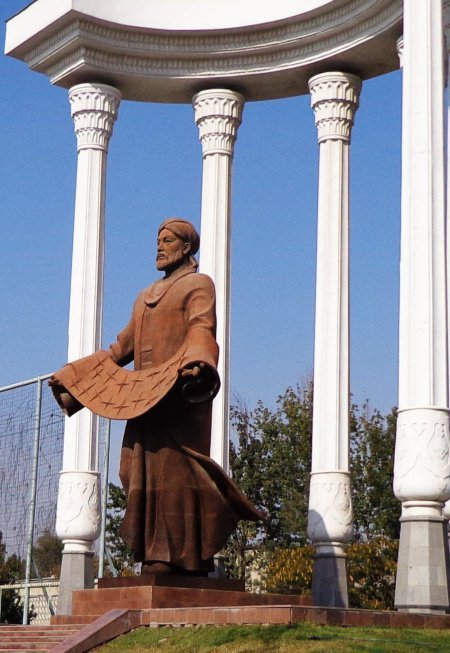In the Middle Ages Astronomy was considered to be one of the many sciences, in which Muslim scholars had been ahead of Europeans for centuries. It is complicated to count the number of astronomical works available at that time, translated from Greek, Syrian and Sanskrit into Arabic. Having learnt the experience of colleagues from Greece, Iran, India and Babylon, Muslim astronomers surpassed them and moved far ahead. One of the bright examples is a famous scientist Al-Farghani.
Why was Astronomy so important to Muslims?
Astronomy in the Islamic World was, primarily, a practical discipline, which helped merchants and travelers during their trips across deserts and seas to find their way. In addition to it, astronomical knowledge let determine the days of holidays and the direction towards Mecca, where Muslims turn during their prayers.

People learnt about how to get to Mali with the help of Mathematics and Astronomy/ Mission to Mali, Public Domain
The Arabs paid much attention to the compilation of star catalogues and astronomical tables – solar, lunar, and planetary. Those tables and reference books were called Sagas and with their help it was possible to establish the movement of planets, stars and eclipse time.
Baghdad, the capital of the Abbasid Caliphate, was a major scientific centre, beginning with the IX century and then for several centuries. There ruler al-Mam’un founded “the House of Wisdom” – the Academy of Sciences in the East. It was the very that place, where the outstanding scholars of those times were invited from all over the large state. Thus, there was mathematician and astronomer al-Khwarizmi, physicist Abu Yusuf ibn Ishaq (al-Kindi), doctors Hunain ibn Ishaq and al-Razi.
Astronomical research was particularly active in “the House of Wisdom”. Two observatories, equipped with the best astronomical instruments of that era, were opened in Baghdad. The astronomers of the Academy measured the circumference of the Earth, the length of the meridian in degrees, watched the starry sky and wrote scientific works. The following famous astronomers entered “the House of Wisdom”: Yahya ibn Abu Mansur, Said ibn Ali, Khalid ibn Al-Abdulmalik-Melverode, Habash al-Hasib al-Marwazi, Abbas ibn Said al-Jawhari. The name of Ahmad al-Farghani was also among those scholars.

The statue of al-Farghani in Cairo (Egypt), the author of the photo: Roland Unger - CC BY-SA 3.0
The life of al-Farghani
The full name of Ahmad al-Farghani, a great astronomer, mathematician and geographer, is Abu al-Abbas Ahmad ibn Muhammad ibn Kathir al-Farghani. He became known as Alfraganus in Europe and as Khasib in the East. There is hardly any biographical information about him. The approximate years of his life are known – 798-861. In addition to it, the last part of his name indicates that he was born in the Fergana Valley in the territory of modern Uzbekistan. However, al-Farghani’s scientific work has not only immortalized his name but also brought him the world fame.
It is well known that middle-aged al-Farghani lived in Baghdad, working in the famous “House of Wisdom”. In the middle of the IX century al-Farghani moved to Cairo where he lived until his death.
He was the author of the following astronomical works: “Book on Celestial Motions and the Complete Science of the Stars”, “A Compendium of the Science of the Stars”, “Book on the Configuration of the Heavenly Spheres” and many others. These treatises are the first works in Arabic on Astronomy.
Al-Farghani’s heritage
In the treatise “Book on Celestial Motions and the Complete Science of the Stars” the scientist gave a brief description of Astronomy, made on the basis of the work “The Almagest” by the Alexandrian astronomer Claudius Ptolemy. Al-Farghani gave the definition to Astronomy as a science, detailing all the key issues, as he wanted his work to be a teaching aid. Moreover, the greatest scientist of the East double-checked the accuracy of his predecessor’s data and corrected many other previously existing astronomical data. According to al-Farghani, his book was to be a textbook for astronomy students, therefore did his best to make the presentation of the basic of science accessible and understandable. His “Compendium of the Science of the Stars” significantly influenced the development of the Western science. Already by the XII century, that book had been translated from Arabic into Latin twice and then a century later there appeared translations into European languages. The work was firsl published in 1493.
In 1669, the Dutch scientist-arabist and mathematician Jacobus Golius translated al-Farghani’s work into Latin again. “Book on Celestial Motions and the Complete Science of the Stars” was offered as an encyclopedia of astronomical knowledge.

The Persian spherical globe of the XVIII century / CC BY-SA 4.0
Great Italian poet Dante was familiar with the book “Alfraganas”, which formed the basis of al-Farghani’s work. His biggest work “Divine Comedy” owes much to the Eastern sciences. Purgatory, described in the comedy, was placed by the author on a mountain in the Western part of the Southern Hemisphere. And al-Farghani, while studying the location of stars, came to the conclusion that an unfamiliar continent had existed in the West and, therefore, he described the sky of that continent. The purgatory in the “Divine Comedy” is located under identical stars.
Amerigo Vespucci, the Italian cartographer, who arrived at the end of the XV century in “India” which had been discovered by Columbus, said that he saw the stars described by Dante in the South of the continent. The continent, which was unknown until then, was called by its own name. That was how al-Farghani, a scientist of the East, prophesied the discovery of America.
Al-Farghani’s works in the field of Astronomy had been the basis of European encyclopedias and textbooks for 700 years. Being a practitioner and constantly watching celestial bodies, al-Farghani made many discoveries. For instance, he scientifically proved that the Earth had the shape of sphere, set the date of the longest day of the year – June, 22, and of the shortest day – December, 23. Al-Farghani also found out the existence of sunspots and predicted solar eclipse, which occurred in 832. He took part in the expedition of the years 832-833 on measurement of the length of the meridian, which passed in the desert between Tadmor and ar-Raqqah.
Al-Farghani’s astronomical research was directly connected with his geographical research. At the end of his “Code of Stars” al-Farghani put a table of well-known geographical objects. He divided them into seven climatic zones from the East to the West and indicated their exact coordinates. He was also the author of such books as “Introduction to Geography”, “The Names of Famous Countries and Cities of the World and their Climatic Conditions”.

The monument to al-Farghani in Uzbekistan, the author of the photo: Multik2014 - CC BY-SA 3.0
The last years of his life the scientist spent in Cairo, where he was engaged in creating astrolabe – an instrument for determining the location of stars and measuring distance between them. The scholar gave mathematical description and suggested measures to improve that device. The outcome of his activities was the creation of so called conditioner, or nilometer. It was built under the leadership of Al-Fergani in 861 to measure the water level in the Nile. It was very important for the population of Egypt. Too much water rise in the river could lead to swamping and crop failure in years of severe flooding. According to the descriptions of the ancient Greek historian Herodotus, sometimes the Nile could flood not only the entire delta but also the surrounding areas, so that the transition from one bank to another one took two days. The machine, designed by al-Farghani, was located on the Rhoda Island and played the key role in flood forecasting. That invention was used during the construction of the Aswan Dam. And it has not lost its relevance to these days, becoming one of the attractions of the capital.
Among geographical community, the following works by al-Farghani are still very popular: “Introduction to Geography”, “The Names of Famous Countries and Cities of the World and their Climatic Conditions”. In 1998, under the aegis of UNESCO, the 1200th anniversary of the talented scientist was widely celebrated all over the world.
The photo in slider: Faruk Kaymak on Unsplash
Ilmira Gafiyatullina
